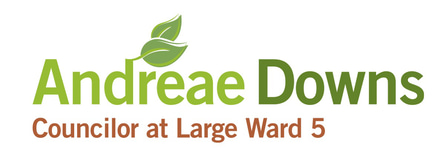FEBRUARY: CRASH DATA AND RESPONSES
Andreae Downs
2/16/20232 min read
February sure started with a shiver. I hope you have been keeping warm!
The most concerning news affecting Newton last month was the estimated costs of not passing the operating override for Newton’s school children. Our public schools are Newton’s crown jewel, and our budget reflects just how much we value them and the education and care they provide our youngest residents. (Over 60% of our operating budget is in the schools; the school budget is roughly 80% staff). More details here.
Override for Schools
One of the more painful votes I have taken in my Council tenure has to be last year’s school budget without some middle school aides to help with pandemic learning losses in reading and math.
That vote looks to be a picnic if the operating override doesn’t pass. According to NPS’ early estimates, the $4.5 million for the schools in the operating override question will still leave a $1-2 million budget gap to fill (Fig City outlines the possible outcomes here).
I remember too well the cuts in the late 1990s/early 2000s when much-beloved enrichment classes were eliminated just before my children could enroll. I don’t want that for any current or future NPS kids.
Car crash statistics, patterns
Public Safety heard from Chief Carmichael again in January with the latest year-over-year numbers for crashes, including those where a person on foot or on bike or skateboard was involved.
The police department (NPD) ranked the top 20 crash locations, but if you map the various intersections, they are grouped into three big clusters:
The so-called Circle of Death (54 total crashes in 2022)
Four Corners (13)
Crafts/Albemarle and Watertown—not all the same intersections, but close (22)
The area near Newton Wellesley Hospital totaled 15 crashes, but Chief Carmichael noted that some of those are fender-benders in the hospital’s parking garage.
Other patterns—the fall seems to have more crashes than other seasons. And the times of day that have the highest crash rates also correspond to school arrival and dismissal times. The whole report is here.
The next question is how Newton will use this information. Already, we have made progress in adding safe crossings and reducing travel speeds near schools and along school routes. We will use crash data to prioritize additional safety changes, particularly where they intersect with walking routes.
I have docketed and passed several dozen 20 mph “safety zones” near parks and schools—this should affect the algorithms used by Waze and Google, making these cut-through routes less attractive. Last month, I docketed and Traffic Council passed the reduction of 35 mph speeds on the eastern end of Washington Street and paralleling that on Tremont (both feed into the Circle). This employs a new legal option to reduce speeds, and we will see how it works before tackling other areas.
While speed limits help, road design is the most effective safety measure. For us to have the funds to continue this work, however, we will need to pass the operating override.
Cool articles I’ve read this month:
A doctor for the homeless reveals unseen people
San Francisco considers adding “gentle density”
Transportation accounts for 40% of greenhouse gasses in the US, but the road to sustainability is not necessarily just swapping out the car’s engine: “The least ambitious scenario — just switching to EVs — could increase the need for lithium by up to threefold by 2050, the authors say. But if the country boosts density, invests in mass transit, builds out lithium battery recycling, and regulates EV battery size, it could cut the amount of extra lithium needed to decarbonize transit by 2050 by more than 90 percent.” Globe article here.
Committee to Elect Andreae Downs,
David Kenney, Treasurer
22 Agawam Road, Waban, MA 02468
Email: andreae4newton@gmail.com
Call: 617-329-1261
